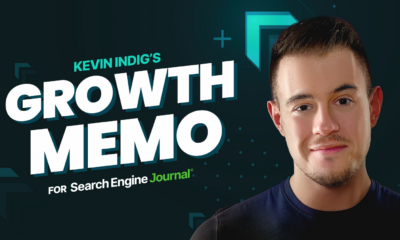MARKETING
Expert Tips for Pro-Quality Footage
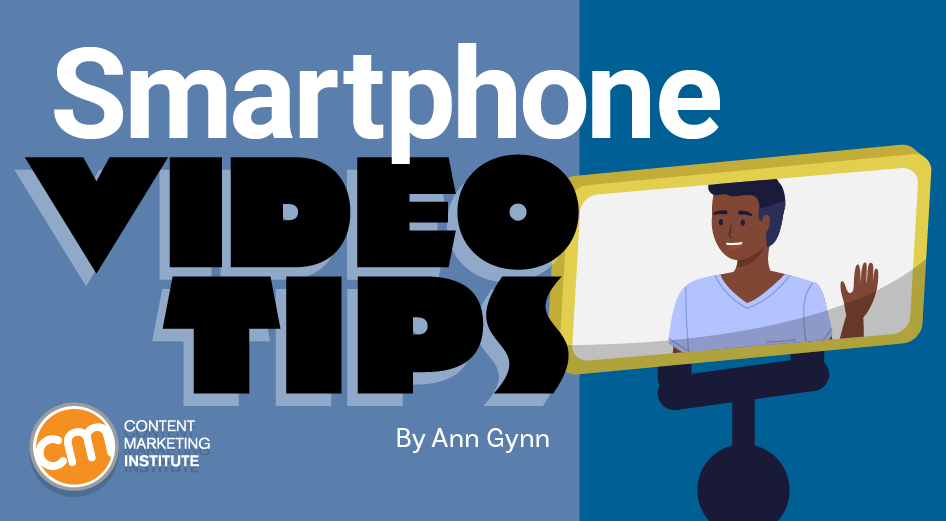
More and better.
That’s what marketers say they need to improve the average and below-average results from their video content, according to CMI’s Video and Visual Storytelling Survey.
They need more budget (52%), more human resources (46%), and more training (33%). They also want better on-camera talent (27%), better equipment, production, and editing tools (25%), and better quality (21%).
More budget and better equipment aren’t necessary to create quality #video when you have a mobile phone via @SaralinaDigital @AnnGynn @CMIContent. Click To Tweet
But “more” and “better” may not be as necessary as you think if you follow the advice of Sarah Sweeney, the owner of SaralinaDigital. Watch the video below or keep reading for the highlights.
Get over your hesitation
The first hurdle to great video is just getting started.
Sarah says people often don’t know where to start. Some don’t want to be on camera. Others think they need high-quality and expensive gear. “They don’t know you can create studio-quality video from the comfort of your iPhone,” she says.
Given the billions watching videos monthly on TikTok (1 billion), Instagram Reels (2.35 billion), and YouTube (2.68 billion), that should be a good enough reason for marketers to get started, Sarah says.
Need an added incentive? Two-thirds of B2B buyers in a HubSpot survey say they’ve watched a video to learn about a brand or its products.
Focus on quality
Quality matters to viewers. The HubSpot research found 64% say it’s somewhat or very important. But that doesn’t require expensive equipment.
Modern phones let you shoot video in 4K quality. “You want quality because people equate quality to the quality of your service, quality of your product, and you want that video to last a long time,” she says.
Sarah also recommends you shoot the video at 30 frames per second, especially if the lighting is not perfect.
Shoot #video from your phone in 4K quality at 30 frames per second, says @SaralinaDigital via @AnnGynn @CMIContent. Click To Tweet
By producing high-quality videos, you also can more easily repurpose them into multiple formats, from your website to social media.
TIP: Buy a phone just to shoot videos for your business, as 4K video consumes a lot of data storage.
Get the right setup
Though you don’t need to invest in expensive equipment, you should invest in three must-have tools for shooting video from your phone – a tripod, lighting, and a microphone.
Forget the flimsy tripods as they break easily. Instead, buy a tripod with a fluid head. Sarah uses a Pivo tripod, which generally costs less than $100.
Buy a tripod with a fluid head for better-quality #video. It’s usually less than $100, says @SaralinaDigital via @AnnGynn @CMIContent. Click To Tweet
Lighting is next on her list. “When you don’t use lighting, your video will look grainy because your cell phone camera lens is working so hard to lighten it up that it will look pixelated,” Sarah explains.
CMI’s LinkedIn Live host Amanda Subler shared with Sarah and the viewers that she uses Mountdog’s softbox lighting kit ($60).
Finally, buy a good microphone. Sarah uses a Rode Mic Mini ($99) for livestreams and podcasts. It can connect through a USB cable to a computer or phone (an adapter is required for the iPhone). She uses a lavalier mic that she clips to her lapel for Instagram Live videos to make sure her audience can hear studio-quality sound.
TIP: Though not necessary, sound-absorbing panels can be a smart investment. They prevent sounds – what you’re recording and external disruptive noises – from reverberating through the office or house.
Make it comfortable for you and your viewers
Some people have a flight-or-fight response when they think about being on camera. “It’s OK. It’s normal. We’ve all been there,” Sarah says.
Picking the fight response – committing to going on camera – is a good choice because a human should be in a brand’s videos to gain viewers’ trust and demonstrate the company’s transparency.
To make the recording more comfortable for the speaker and the viewer, Sarah suggests the on-camera person should:
- Project their voice to elicit viewer confidence.
- Make eye contact with the camera to be viewed as transparent and trustworthy.
- Speak in their typical mannerisms (i.e., body language) as that genuineness brings people into the brand.
To get comfortable with that presentation style, the person should practice on camera and review the recording to identify areas to improve.
TIP: Instagram offers a mock-live setting where you can change the audience setting so no one sees you.
Script the conversation and edit the video
Though tempting, speaking extemporaneously should be avoided. A script allows the brand to ensure the video serves the marketing goal. In many cases, the video should follow a similar format – identify a problem viewers may or may not realize they have, explain the solution, and connect the problem and solution for the viewer (i.e., prospective buyer).
TIP: For short-form videos, keep the script to a minute or less (about 120 words).
When the script is followed and the recording is complete, Sarah recommends an app called InShot to edit videos on your phone. It works well as an introductory-level editing tool. “You don’t need to get fancy” by adding transitions and graphics, she says.
As you gain confidence in your skills, you can add a graphic explaining the video topic and then maybe a transition. “Before you know it, you’re going to be creating videos with transitions and brand graphics,” Sarah says.
But you can’t get there – and you certainly can’t get better-than-average results – if you don’t first appreciate more budget and people and better tools and talent aren’t required. Now, what will you shoot first?
All tools mentioned in the article are identified by the author. If you have a tool to suggest, please feel free to add it in the comments.
HANDPICKED RELATED CONTENT:
Cover image by Joseph Kalinowski/Content Marketing Institute
MARKETING
Elevating Women in SEO for a More Inclusive Industry
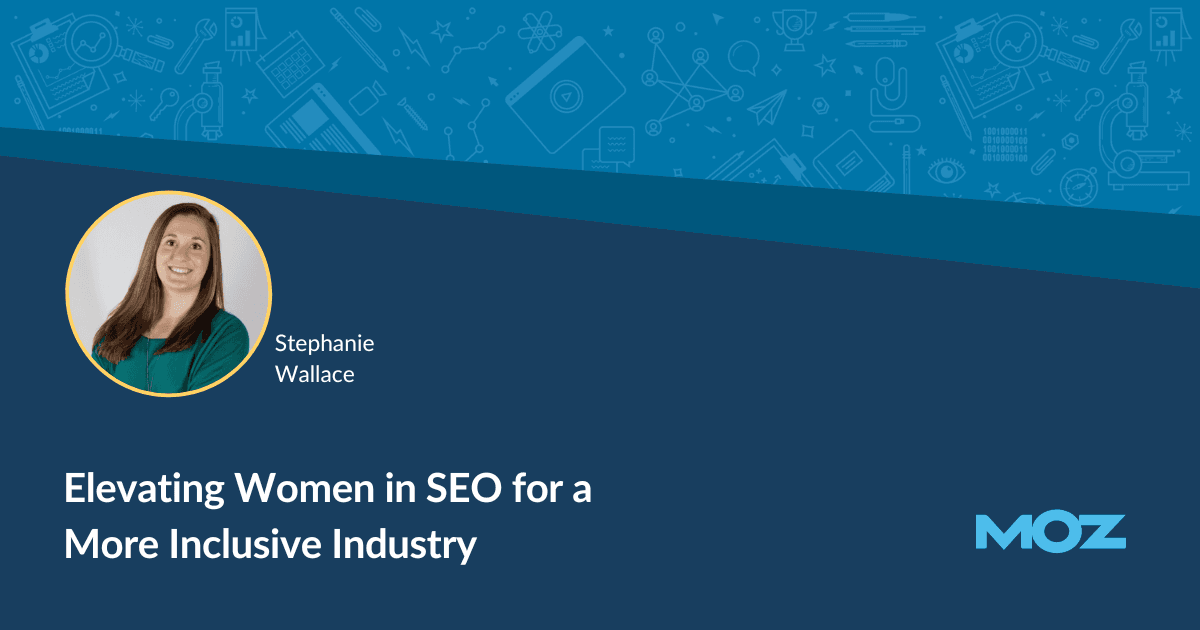
Know your value
It’s essential for women to recognize their worth and advocate for themselves in the workplace. It’s important to know your value and not be afraid to own it.
For a lot of women, myself included, doing this can feel horribly unnatural. It’s often hard to admit that you’re good at things or that you have big ambitions because of how society treats us. I, for example, often struggle with writing my own bio or answering questions about my career path and successes. I even struggled while writing this article in many ways, describing my personal experiences and opening myself up.
It’s easy to underestimate our value and downplay our contributions, but it’s essential to recognize the unique skills, talents, and perspectives that we bring to the table. So, take a moment to reflect on your achievements, expertise, and strengths. Don’t be afraid to speak up and advocate for yourself in meetings, negotiations, and performance reviews. While it may sound daunting, there are actionable steps you can take to get started.
Track your achievements and, as much as possible, quantify the impact. Document projects you’ve worked on, results you’ve achieved, and positive feedback or recognition you’ve received from colleagues or supervisors. Use data and metrics to demonstrate the value you bring to the table. And when the time comes to discuss salary and benefits, you will be prepared with everything you need to ask for what you deserve. Try writing a script and reading it aloud to prepare yourself. It may feel silly, but it works.
More tactically, do your research. Find salary benchmarks from places like Glassdoor or LinkedIn. Use Fishbowl to find people talking candidly about salary ranges for roles similar to yours. There are multiple “Bowls” dedicated to salary, compensation, and negotiations. You may just find people comparing notes on salary from your company.
Remember, you deserve to be recognized and rewarded for your hard work.
For those in leadership positions, we can advocate for more transparency around salary and compensation. That doesn’t have to mean that an entire company has access to everyone’s personal income, but it could mean that, as a company, you share salary ranges for different positions based on experience. It could mean that you clearly define the factors that go into determining salary or a raise and how these factors are weighted. Every company is different, but the goal should be to foster a culture of transparency and accountability.
Overcoming imposter syndrome
Overcoming imposter syndrome and self-doubt is key to promoting yourself and establishing a strong professional identity. It’s natural to experience moments of insecurity and self-doubt. It’s natural to have a sense of not belonging. I know I have certainly experienced it. But just because you feel impostor syndrome or you’re not sure you can do something doesn’t mean you shouldn’t try. Don’t disqualify yourself.
In my experience, men more often specialize in technical SEO than women, which can cause a lot of women to doubt themselves around the more technical side of things. Data from Lidia’s article on the gender divide in topics illustrates this very well. Last year, men wrote the overwhelming majority of content on technical SEO and AI. In contrast, women tended to author more of the “soft” topics. This could be related to women in our industry feeling like they can’t or shouldn’t author content on certain technical topics.
But it’s essential not to let imposter syndrome hold you back from reaching your full potential. So, next time you feel a sense of not belonging, remind yourself of your accomplishments, resilience, and unwavering determination. And remember, you are not alone — many successful women have faced imposter syndrome and overcome it, and so can you.
Make your own credentials
In today’s competitive world, it’s not enough to rely on others to recognize your talents and achievements — you need to take control of your own narrative and actively promote yourself.
You don’t have to write a dissertation to be considered an expert. You also don’t have to share a brand new idea or point of view to be considered a thought leader. The key is to find inefficiencies and unique perspectives — whether about the industry as a whole or specific to SEO specialties or verticals — and be vocal about it.
Leverage social media and your personal or company website as a platform to express your opinions and share your ideas. Join SEO communities like Sisters in SEO on Facebook or Women in Tech SEO on Slack. These are your peers who will not only happily support your thought leadership efforts but also serve as a sounding board and support system for you. Seek out speaking opportunities and podcast guest appearances. Submit your work and yourself for awards. Don’t be afraid to put yourself out there and showcase what you bring to the table.
I created my own website a few years back to showcase my expertise. With options like WordPress and Wix, it’s easier than ever to get a site up and running. It’s also relatively inexpensive to maintain. Today, I use it as a portfolio that showcases all of my accomplishments, from publications to speaking engagements.
Just remember — innovation is great, but it’s not a requirement. A new perspective on something old can be just as valuable as a shiny new idea.
Depth over breadth
Not everybody has to be (or can be) an expert on all things SEO. But you can become an expert on a very specific topic or aspect of SEO. You can also work to become the local expert within your company, city/region, or even a particular vertical. The goal is to be the go-to person about a certain topic or facet of the industry. Maybe you want to be the voice of local SEO like Darren or the data scientist like Annie. Use that angle to start small and master your niche.
Building your own credentials isn’t magic. It just feels that way when it works.
Creating a clear and impactful online presence that reflects what you do and what you stand for will allow you to stand out as a true thought leader. Strong personal branding also provides an opportunity for women in SEO to gain valuable support by connecting with other female leaders. The more value you can provide, the stronger your credentials will be, and the wider your reach can grow.
MARKETING
A Recap of Everything Marketers & Advertisers Need to Know

When rumors started swirling about Twitter changing its name to X, I couldn’t believe it at first. But then, in July 2023, as I searched for my favorite blue icon on the phone, I found a black icon instead. It had actually happened!
MARKETING
The key to correcting the C-suite trust deficit

Take a moment to search “CMO tenure” and you’ll find a wide variety of content discussing the short tenure of CMOs and how it’s among the shortest of roles in the C-suite. If you dive deeper, you’ll find that CEOs don’t seem to trust CMOs.
Boathouse’s CMO Insights study (registration required) noted several sobering conclusions:
- 34% of CEOs have great confidence in their CMOs.
- 32% of CEOs trust their CMOs.
- 56% of CEOs believe their CMO supports their long-term vision.
- And only 10% of CEOs believe their CMO puts the CEO’s needs before their own.
If these statistics also apply to the CMO’s entire organization, then it’s clear we have a trust problem with marketing leadership.
If you haven’t read Patrick Lencioni’s “The Five Dysfunctions of a Team,” I consider it required reading for anyone in any leadership role. In his book, Lencioni builds a pyramid of dysfunctions that need to be addressed for a team to succeed. The foundational dysfunction — with which one cannot build a successful team — is “absence of trust.” We see it at scale with marketing organizations today.
Introducing objectivity through data
In “Hamlet,” Shakespeare writes, “There is nothing either good or bad, but thinking makes it so.” Each organization that makes up a company looks at the company from a different perspective. What marketing sees as positive, finance may see as negative. But who’s right? No one.
Usually, there is no objectivity because leadership comes up with an idea and we execute it. It’s like the fashion proverb “Beauty is in the eye of the beholder.” Unfortunately, we’re going to struggle to run a profitable organization if it’s run like a fashion show.
Therefore, we need to introduce objectivity to how we work. Leadership needs to come together to agree on goals that align with the goals of the broader organization. One element of this conversation should be an acknowledgment that this is turning a ship.
Often leaders — especially those without marketing backgrounds — are likely to expect instant gratification. It’s going to take time to turn the ship and you and your team would do well to set reasonable expectations right away.
Dig deeper: KPIs that connect: 5 metrics for marketing, sales and product alignment
Aligning goals and metrics across the organization
With goals in hand, we need to assign metrics to their progress and agree on the source(s) of truth. Once these objective measures are in place, perspective doesn’t matter. 2 + 2 = 4 regardless of whether you’re in HR or accounting.
Every public road has a speed limit and whether you’re in compliance with it has nothing to do with your perspective. If you’re above it, you’re wrong and subject to penalties. Referring to the fashion example, it’s not a fashion show where some people like a dress and others don’t.
By using data to objectively measure marketing’s progress within the organization and having the rest of the leadership buy into the strategy, we build trust through objectivity. Maybe the CEO would not have chosen the campaign the marketing team chose.
But if it was agreed that a >1 ROAS is how we measure a successful campaign, it can’t be argued that the campaign was unsuccessful if the ROAS was >1. In this example, the campaign was an objective success even if the CEO’s subjective opinion was negative.
Data-driven campaign planning
Within the marketing organization, campaigns should always be developed with measurement top of mind. Through analysis, we can determine what channels, creative, audiences and tactics will be most successful for a given campaign.
Being able to tell the leadership team that campaigns are chosen based on their ability to deliver measured results across metrics aligned to cross-departmental goals is a powerful message. It further builds trust and confidence that marketing isn’t run based on the CMO’s subjective opinions or gut decisions. Rather, it’s a collaborative, data-driven process.
For this to be successful, though, it can’t just be for show, where we make a gut decision and direct an analyst to go find data to back up our approach. This would be analytics theater, which is a perversion of the data. Instead, tell the analyst what you think you want to do and ask them to assess it.
For the rest of the organization’s leadership, ask questions when the marketing team presents a campaign. Find out how they came up with the strategy and expect to hear a lot about data — especially the metrics you all agreed would support the company’s overarching goals.
Dig deeper: 5 failure points of a marketing measurement plan — and how to fix them
Data literacy: Building credibility through transparency
Building trust doesn’t happen overnight, but a sustained practice of using data to drive marketing leadership’s decisions will build trust if the metrics ladder up to the organizational goals and all of leadership is bought into the measurement plan.
Over time, this trust will translate into longer tenure and more successful teams through building the infrastructure needed to tackle Lencioni’s five dysfunctions.
Opinions expressed in this article are those of the guest author and not necessarily MarTech. Staff authors are listed here.
-
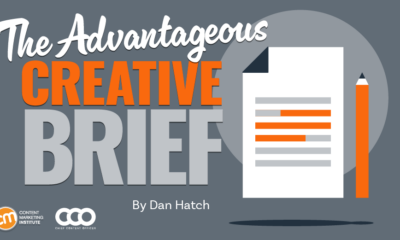
 MARKETING7 days ago
MARKETING7 days agoHow To Develop a Great Creative Brief and Get On-Target Content
-
SEARCHENGINES7 days ago
Daily Search Forum Recap: April 30, 2024
-
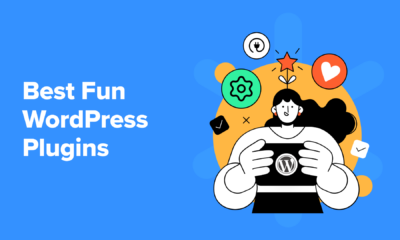
 WORDPRESS7 days ago
WORDPRESS7 days ago13 Best Fun WordPress Plugins You’re Missing Out On
-
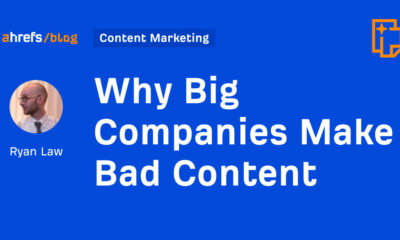
 SEO6 days ago
SEO6 days agoWhy Big Companies Make Bad Content
-
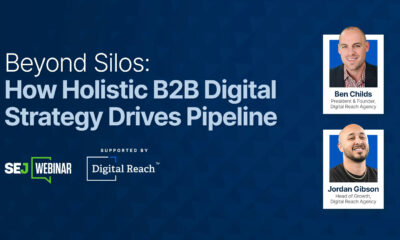
 SEO6 days ago
SEO6 days agoHow To Drive Pipeline With A Silo-Free Strategy
-

 PPC6 days ago
PPC6 days ago26 Ready-to-Go AI Prompts for Social Media
-
SEARCHENGINES3 days ago
Daily Search Forum Recap: May 3, 2024
-

 MARKETING6 days ago
MARKETING6 days agoGenerative Engine Optimization Framework Introduced in New Research










